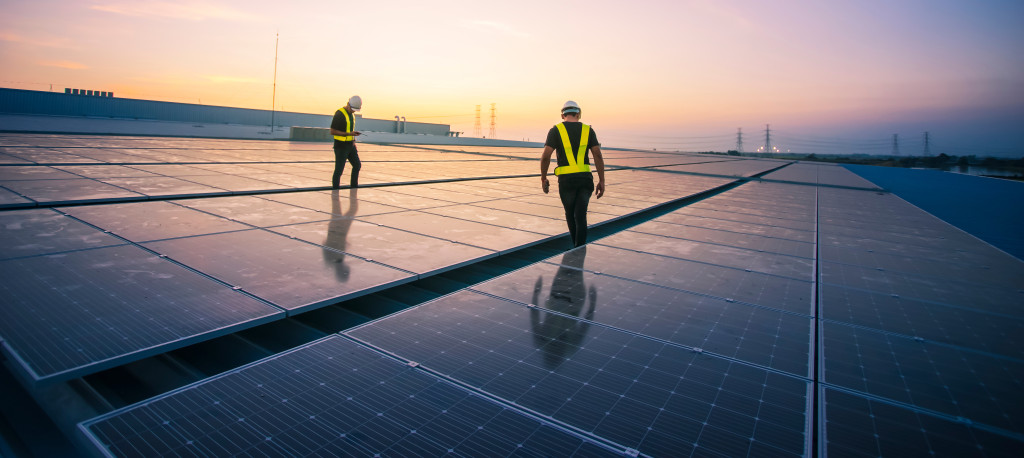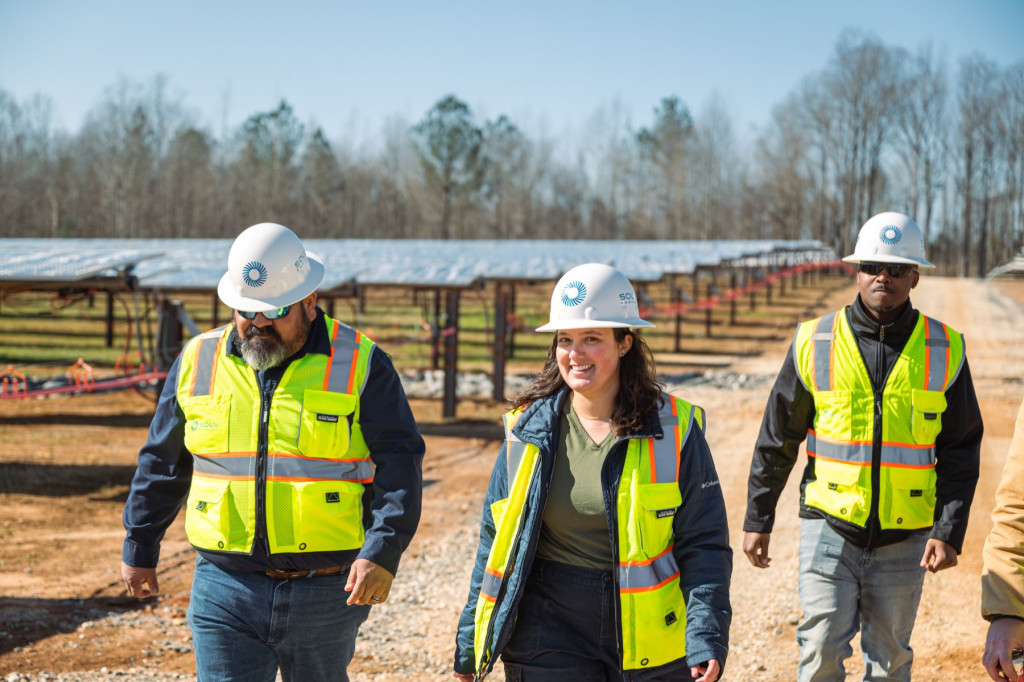Executive Summary | Key Findings: Solar Job Trends | Jobs in Other Clean Energy Industries | Solar Workforce Demographics | Solar Workforce Development | Acknowledgements
Executive Summary
The 13th annual National Solar Jobs Census is a comprehensive review of employment and workforce development in the U.S. solar energy industry, nationwide and state by state. It is published by the Interstate Renewable Energy Council (IREC). This year’s report also includes information on jobs in the battery storage sector and other clean energy industries.
The Solar Jobs Census is based on a rigorous survey administered by BW Research in the spring of 2023 for the U.S. Department of Energy’s United States Energy & Employment Report (USEER) 2023. The data in the Solar Jobs Census are as of December 2022.
The Solar Jobs Census defines solar workers as those who spend 50% or more of their time on solar-related work.
Key Findings: Solar Job Trends
- As of December 2022, there were 263,883 solar workers in all 50 states, the District of Columbia, and Puerto Rico. This represents an increase of 8,846 jobs, or 3.5% growth since 2021.
- This growth came in a year of transition for the solar industry, as the threat of new tariffs on panels and cells and other supply chain concerns led to a slowdown in large-scale solar installations. Nationwide, the utility-scale solar market lost about 6,000 jobs in 2022. In contrast, residential solar jobs grew by 11%, or about 9,500 jobs, balancing out the losses in utility-scale solar.
- About two-thirds of all solar jobs in 2022 (171,558) were at installation and project development firms. There were 33,473 jobs at manufacturing firms, 30,618 in wholesale trade and distribution, 16,585 in operations and maintenance, and 11,648 in a miscellaneous “all others” category.
- Solar jobs grew in 42 states and Puerto Rico in 2022. The state with the most jobs added in 2022 was California, the nation’s largest solar market, with 2,404 jobs added. California was followed by New York (988 jobs), Texas (904 jobs), Florida (506 jobs) and Massachusetts (476 jobs).
- Total solar manufacturing jobs increased only slightly from 2021. Since the passage of the Inflation Reduction Act, there have been a flurry of announcements for new domestic manufacturing facilities, which if built could substantially increase manufacturing employment in 2023 and beyond.
- In addition to the 263,883 workers spending the majority of their time on solar, there were additional workers who spent less than half their time on solar-related work. In total, there were 346,143 workers who spent all or part of their time on solar.1
- The solar industry expects a year of recovery in 2023, with anticipated growth in both the large-scale solar and residential markets. The passage of the Inflation Reduction Act in 2022 will lead to a transformative expansion of the clean energy sector in 2024 and beyond.

Jobs in Other Clean Energy Industries
- This year, the Solar Jobs Census includes data on jobs in other clean energy industries, based on the findings in the USEER survey. Workers are categorized based on the industry in which they spend the largest amount of their time.2
- There were 85,858 workers employed in clean storage jobs in 2022, a 4.6% increase from 2021.3 Clean energy storage is in the midst of an employment boom, with jobs growing 28% since 2017.
- Among all clean storage workers, 72,923 workers, or 85% of the total, worked in battery storage. In total, there were about 432,000 workers in either solar energy or clean storage in 2022.
- Just over half of battery storage workers were involved in construction, which includes jobs installing the battery storage projects. Another 19% were involved in battery manufacturing, and others were involved in professional and business services or wholesale trade.
- The top state for clean storage jobs was California with 17,580 jobs, followed by Nevada, Texas, Massachusetts, and Michigan.
- There were 125,580 wind energy jobs in 2022, a 4.5% increase from 120,164 jobs in 2021. Among states, Texas leads the nation by far with about 26,000 wind energy jobs.
- In 2022, there were 546,630 workers in renewable energy generation industries, including solar, wind, traditional hydropower (54,595), low-impact hydropower (11,677), and geothermal (8,635).
- Overall, the USEER finds there are 3.1 million jobs in net-zero energy technologies, an increase of 3.9% from 2021.4

Solar Workforce Demographics
- The proportion of women in the solar workforce increased from 27% in 2017 to 31% in 2022. Black people made up 9% of the solar workforce in 2022, considerably less than the proportion in the overall workforce (13%).
- Eight percent of solar employees are veterans, well above the 5% in the overall workforce. Only 13% of the workforce is 55 and over, compared to 24% nationwide.
Solar Workforce Development
- In 2022, 44% of solar industry employers said it was “very difficult” to find qualified applicants—the highest such percentage ever recorded in the Solar Jobs Census.
- Most new hires in 2022 required some previous work experience. However, less than half of all new hires required a bachelor’s degree, about a third required an associate’s degree, and almost none required a vocational or post-secondary certificate.
- 10.5% of solar workers are represented by a union, collective bargaining agreement, and/or project labor agreement. By comparison, 7% of the U.S. private sector workforce is represented by a union.
- The Inflation Reduction Act will encourage the utility-scale solar industry to increase the use of Registered Apprenticeships, one of the best ways to hire and retain a skilled workforce.
Acknowledgements
The 13th annual National Solar Jobs Census is based on a survey conducted by the U.S. Department of Energy for the United States Energy & Employment Report (USEER) 2023. The survey was administered by BW Research Partnership. Our thanks to the Department of Energy for providing access to the survey data. Full details on the methodology can be found in the USEER report, Appendix B.
Thanks to the Solar Energy Industries Association (SEIA) for enhancing the survey by providing data from the National Solar Database, and for their thoughtful assistance with this project. Our thanks also go to several solar industry representatives who assisted with our research on a background basis. Thanks to the American Clean Power Association for assisting with analysis of the wind and storage sectors. IREC is solely responsible for the report content and any errors.
Unless otherwise indicated, all solar jobs data from 2010-2022 derive from the National Solar Jobs Census report series, available at http://www.solarjobscensus.org.
This report was written by IREC staff including Avery Palmer, Communications Projects Director; Ed Gillland, Senior Director, Strategic Initiatives; and Mari Hernandez, Assistant Director, Regulatory Program. Other staff who assisted with the report include Larry Sherwood, President and Chief Executive Officer; Leslie Graham, Development Director; Gwen Brown, Vice President of Communications; Nicole Wilson, Communications and Digital Media Manager; Zack Loehle, Communications Specialist; Megan Berry, Communications Contractor; Carlos Alberto Velázquez Lopez, Program Director; and Mariana García Benítez, Program Manager—Puerto Rico Energy Resilience.
For technical questions about this report, please contact Ed Gilliland at [email protected]. For media inquiries, please contact Avery Palmer at [email protected].
When referencing this material, please cite this publication as follows:
Interstate Renewable Energy Council, National Solar Jobs Census 2022 (July 2023), available at http://www.SolarJobsCensus.org.
Solar Jobs Census Sponsors
IREC’s Census Report is completely funded through private support. This year, we gratefully acknowledge the exceptional participation of Nextracker as a lead sponsor. IREC extends special thanks to Fluke Corporation, Solar Energy Industries Association, SOLV Energy, Sunpower, SolarEdge, California Energy Commission, Sunrun, Nautilus Solar, and Boviet Solar for committing additional financial support as Census sponsors.
Footnotes
- This total does not include the 2,107 majority-time solar workers in Puerto Rico. If these are included, the total comes to 348,250 solar workers.
- These data include workers who spent all or part of their time in the industry attributed to them. Therefore numbers should be compared to the 346,143 workers who spent all or part of their time on solar. The United States Energy & Employment Report does not include workers in Puerto Rico.
- Clean storage jobs include battery storage, pumped hydro storage, mechanical storage, thermal storage, and biofuel storage.
- Net-zero energy technologies include renewable energy generation, nuclear energy, and clean energy industries within energy efficiency and transmission, distribution, and storage.